DOT Regulations for Hauling Heavy Equipment: 5 Critical Factors to Consider
Transporting heavy equipment isn’t just about getting it from point A to point B—it’s about ensuring safety, protecting valuable machinery, and complying with Department of Transportation (DOT) regulations. Whether you’re an experienced commercial driver and hauler or new to the industry, knowing the rules can help you avoid fines, prevent accidents, and keep your operations running smoothly.
Why DOT Regulations Matter in Heavy Equipment Hauling
The Federal Motor Carrier Safety Administration (FMCSA), a division of the DOT, oversees the safety of commercial vehicle operations. Their primary goal is to prevent injuries and fatalities related to heavy equipment transportation. This means all operators moving large machinery—such as front-end loaders, tractors, power shovels, and bulldozers—must adhere to strict guidelines.Even if you’re hauling lighter machinery, these same safety principles apply, ensuring that equipment remains securely fastened during transport.
Load Securement: Key Regulations for Heavy Equipment
One of the most critical aspects of heavy equipment transportation is load securement. DOT rules require that all vehicular cargo must be restrained and tied down to prevent movement that could cause damage or accidents.
Tie-Down Requirements
- A minimum of four tie-downs must be used for any heavy equipment transport.
- Each tie-down must have a working load limit (WLL) of at least 5,000 lbs.
- Tie-downs should be firmly attached at the front and rear or at designated mounting points on the equipment.
- To prevent loosening during transit, edge protection should be used to avoid wear or damage to straps.
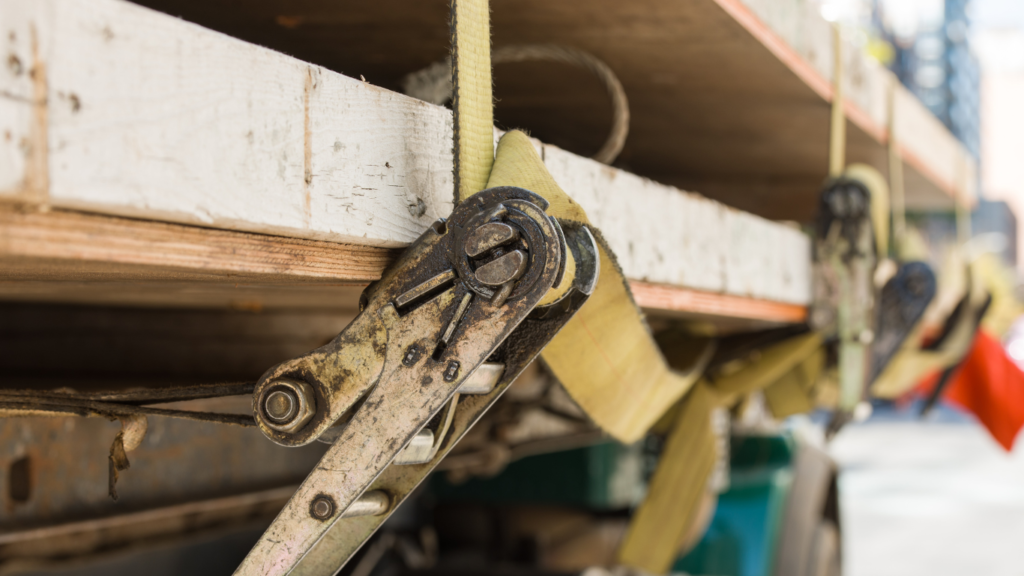
Load Limits Based on Cargo Size
Every piece of heavy equipment being transported must be immobilized to prevent shifting. Here’s a breakdown of minimum tie-down requirements:
- For small items (5 feet or less, under 1,100 lbs) → 1 tie-down is required.
- For medium items (over 5 feet but under 10 feet, any weight) → 2 tie-downs are required.
- For large items (over 10 feet) → 2 tie-downs for the first 10 feet, plus 1 extra tie-down for every additional 10 feet.
Learn more about FMCSA Load Securement Requirements.
Preventing Load Shifting: Best Practices
In addition to tie-downs, haulers must take steps to block, brace, and immobilize cargo. This is especially important for equipment that may roll or shift. To keep everything secure:
- Use chocks, wedges, or cradles to prevent rolling.
- Place items in direct contact with each other when loading multiple pieces of machinery.
Ensure all cargo is braced to prevent forward, backward, or side-to-side movement.
DOT Regulations for Specific Types of Cargo
Beyond standard heavy equipment, the FMCSA has detailed rules for certain types of transported materials. If you’re hauling any of the following, be sure to review the specific guidelines:
- Logs, firewood, and lumber
- Metal coils and paper rolls
- Concrete pipes and intermodal containers
- Automobiles, light trucks, and vans
- Crushed or flattened vehicles
- Large boulders and construction materials
For a complete list of United States DOT cargo regulations, visit the FMCSA Cargo Securement page.
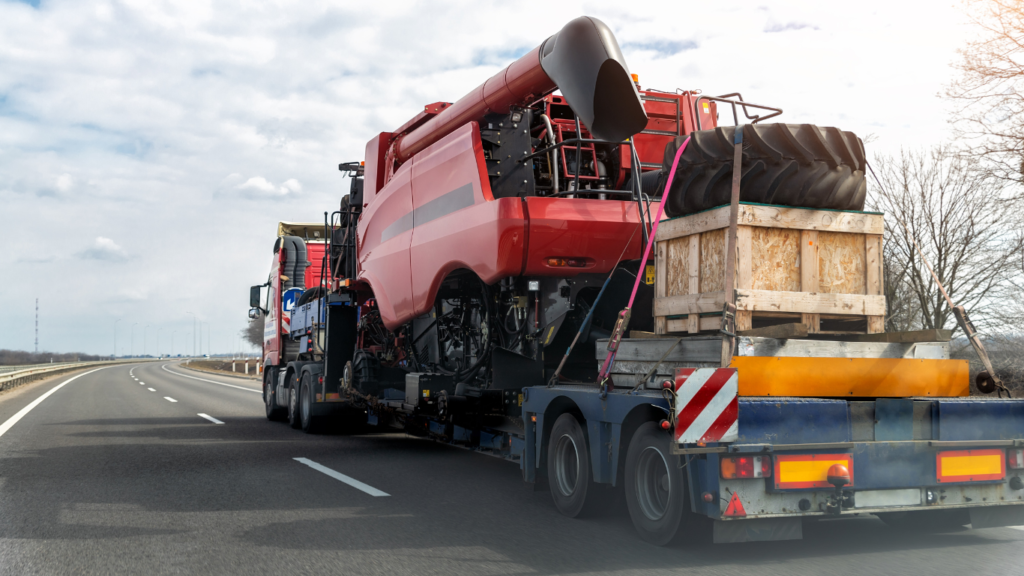
What Makes a Good Load Securement System?
Many elements go into properly securing heavy machinery, including:
- Vehicle floors, decks, and anchor tie-down points
- Securement devices like chains, ropes, synthetic webbing, and steel strapping
- Additional blocking, binders, shackles, and winches for extra reinforcement
To ensure safe transport and prevent accidents with heavy loads, all equipment should be thoroughly inspected before loading. A wide variety of key checks include the condition of tie-down straps, chains, and anchor points; verifying that the trailer’s weight capacity is not exceeded; ensuring proper load balancing to prevent tipping or shifting; and securing all accessory equipment to avoid movement during transit.
Staying Compliant with DOT Regulations
Successfully transporting heavy equipment isn’t just about following the rules—it’s about ensuring safety for everyone on the road. Staying compliant with DOT and FMCSA regulations helps prevent accidents, reduces liability, and keeps your business operating smoothly.If you’re looking for expert guidance on heavy hauling and specialized equipment transport, contact us. With over 40 years of transport services experience, we work closely with major carriers, energy companies, and industrial clients to transport oversize loads and heavy machinery safely and efficiently.
Reader interactions
3 Replies to “DOT Regulations for Hauling Heavy Equipment: 5 Critical Factors to Consider”
Comments are closed.

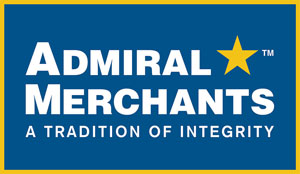



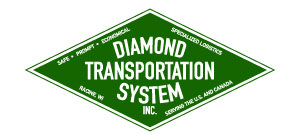

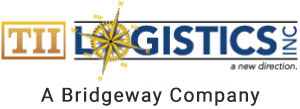
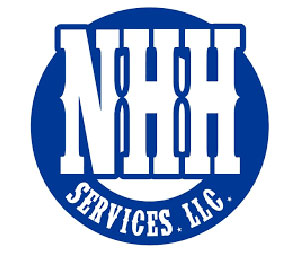
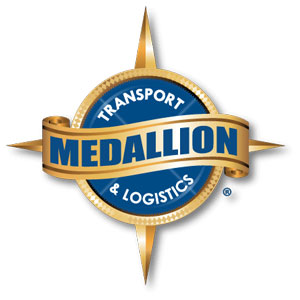
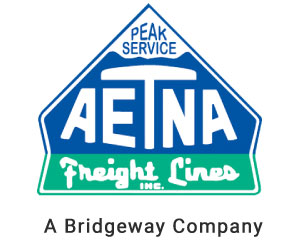


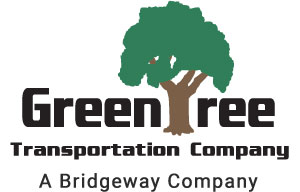

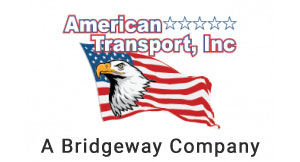
[…] Know the regulations. Cargo securement standards represent the minimum safety requirements for general cargo and some specific commodities. […]
[…] and exceeds industry requirements. Drivers are selected based on strict guidelines and must meet U.S. Department of Transportation safety regulations as well as stringent DD&S Express […]
[…] Load carefully: When you get to the seller’s location to pick up your backhoe, you’ll want to make sure you know how to load it for safe backhoe hauling in Denver, CO. To attach it to a flatbed, you’ll want to remove the pin from the bucket and lower it. Then, use several chains or ratchet straps to hold down the machinery and ensure it doesn’t move about. It’s important to check with your state’s Department of Transportation to ensure you’re compliant with its rules and regulations. […]